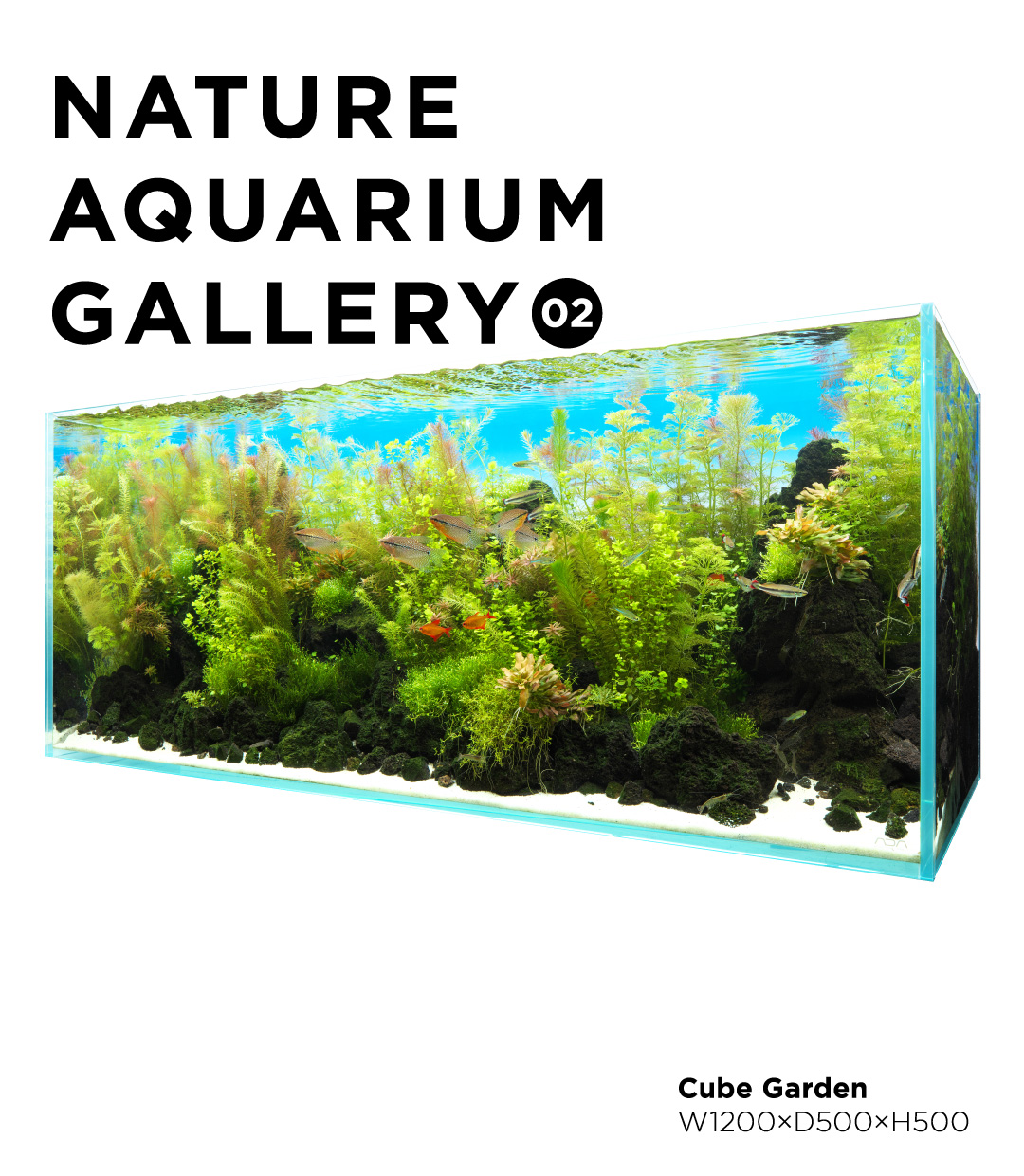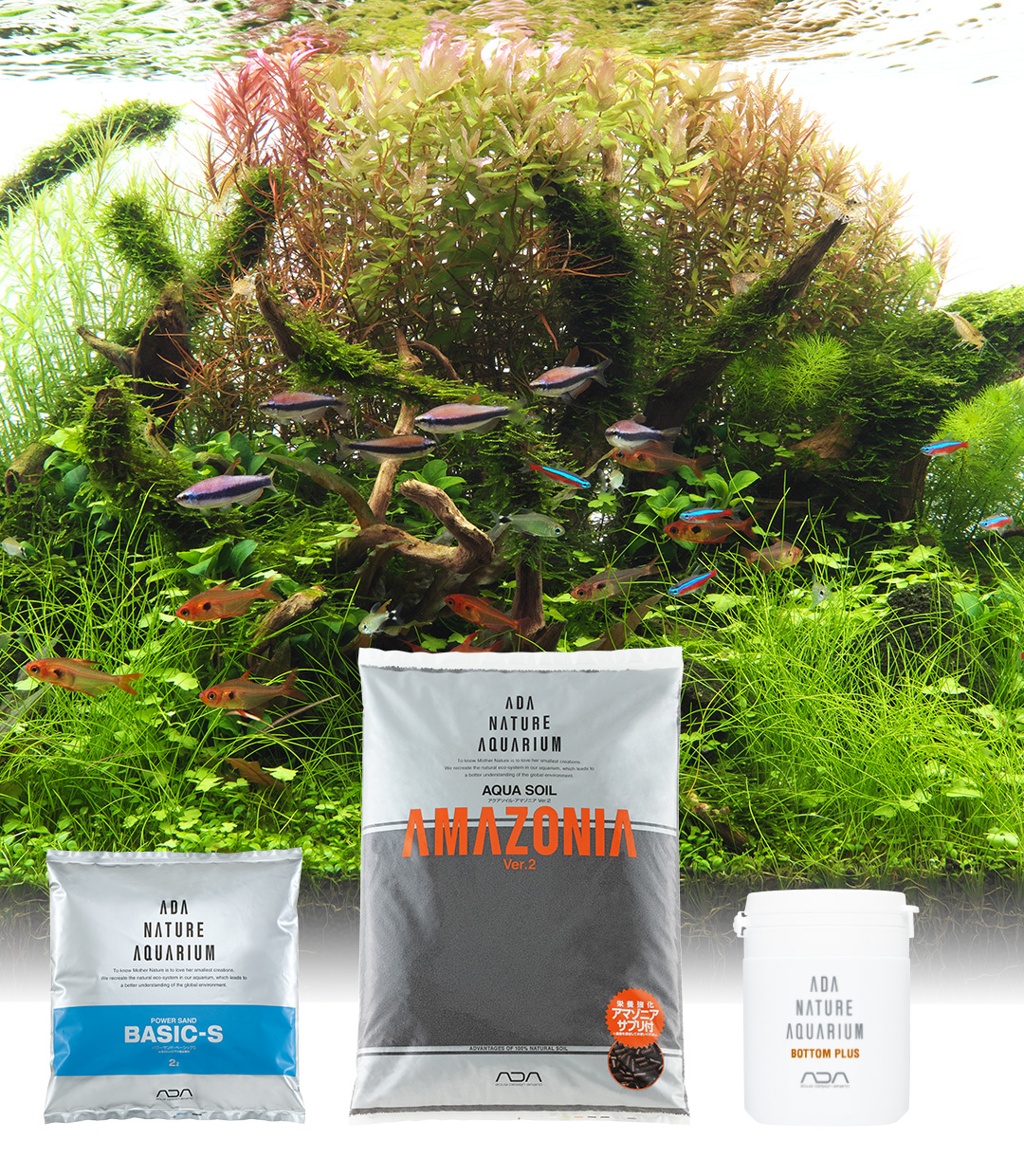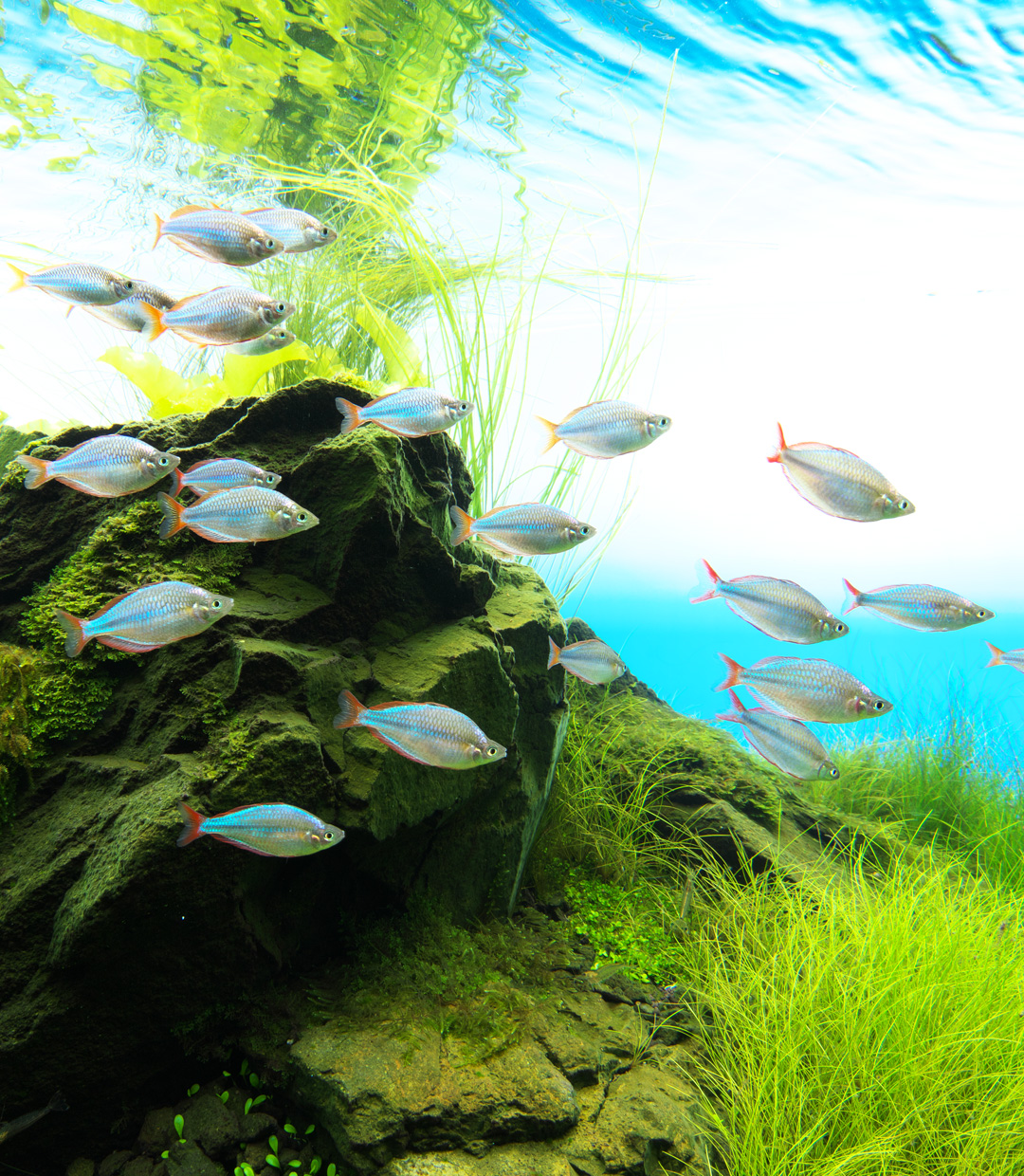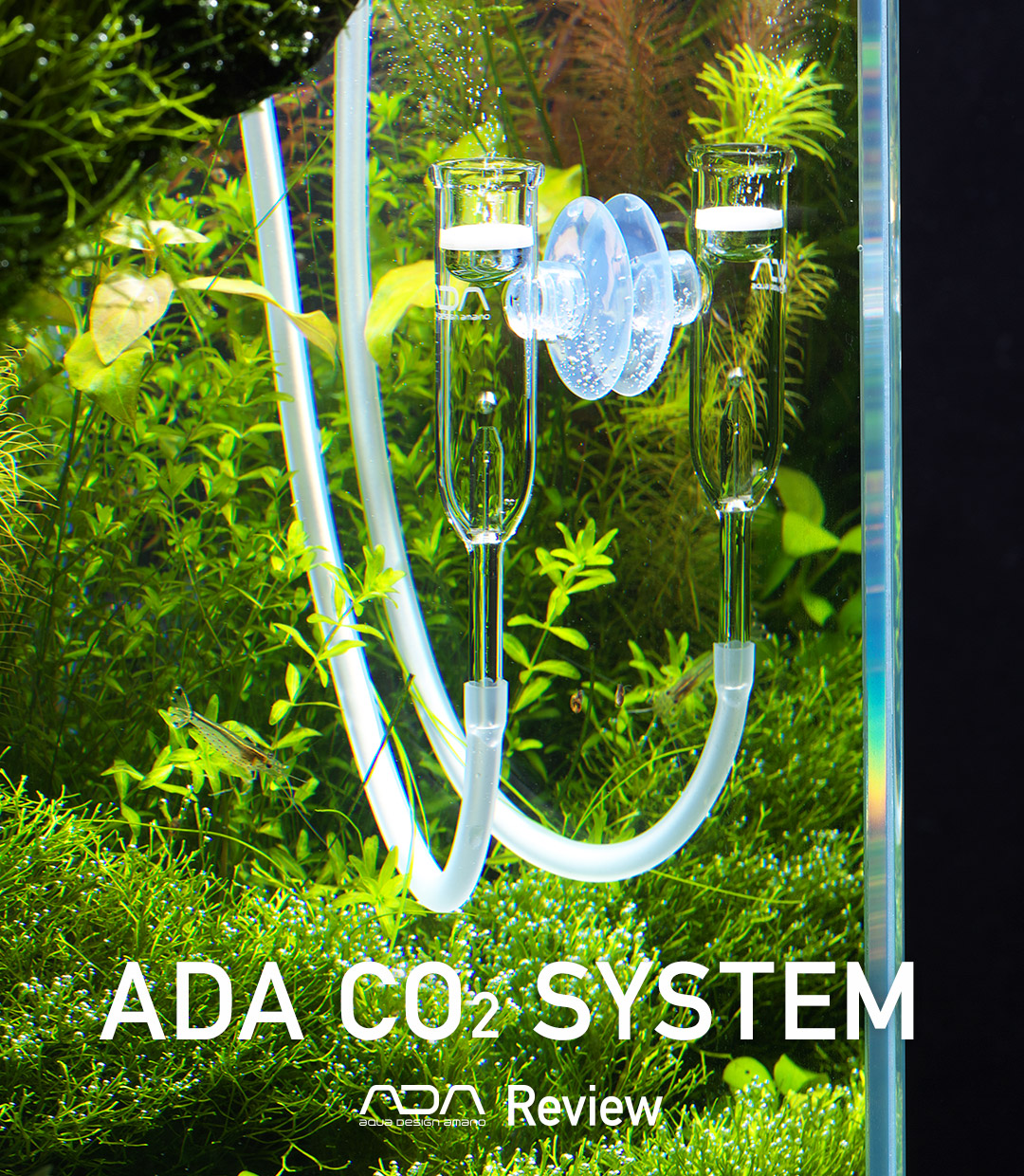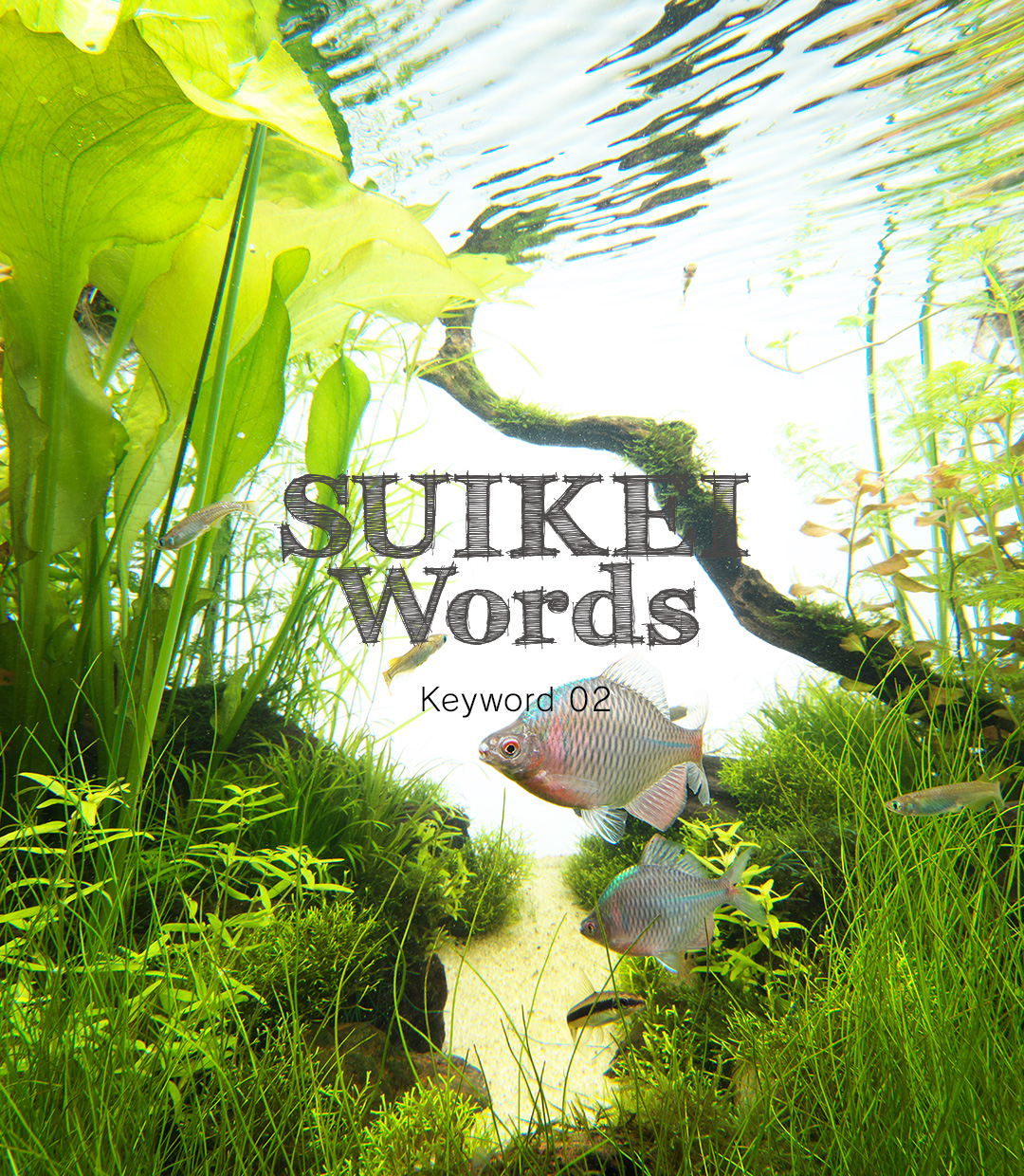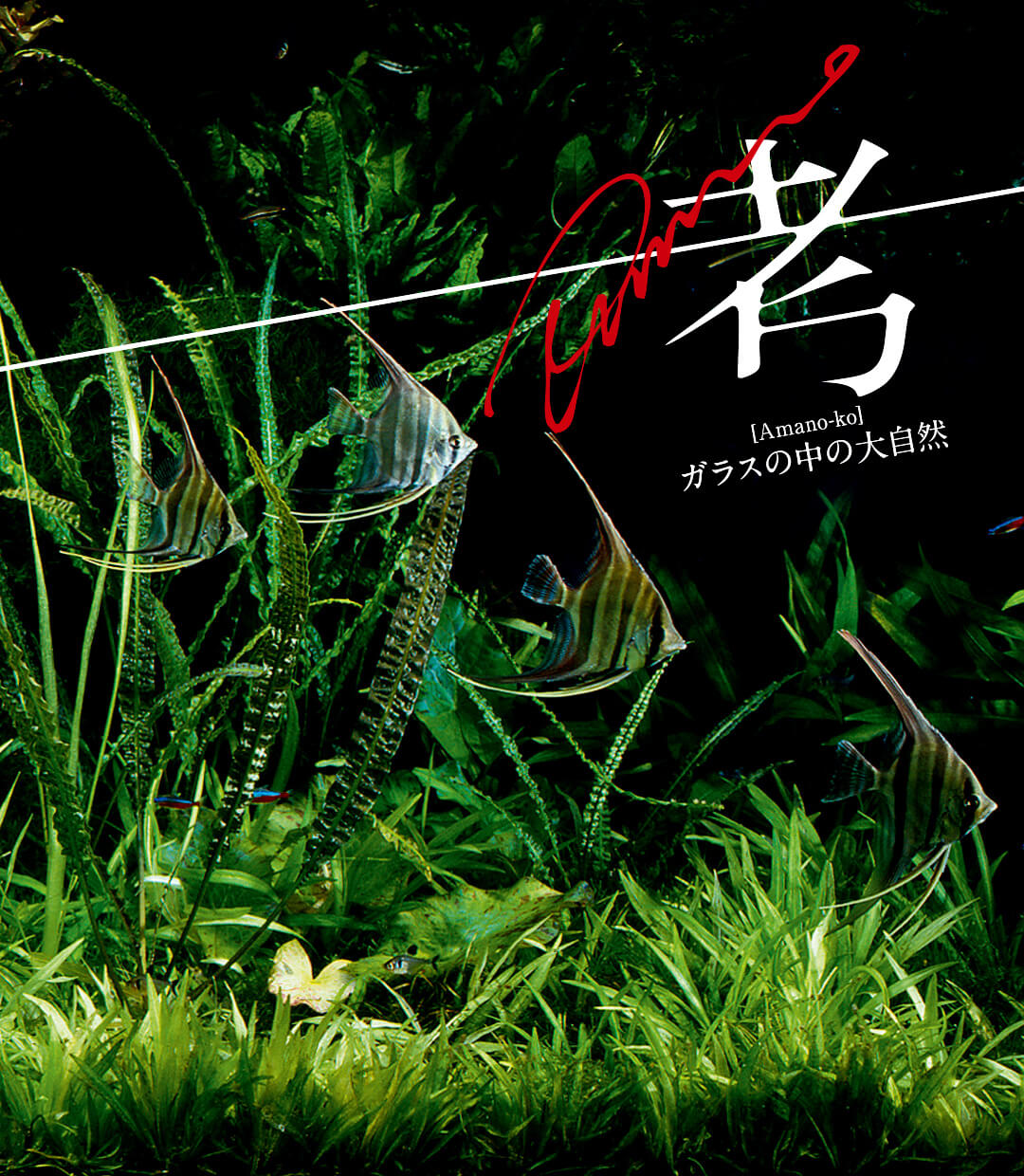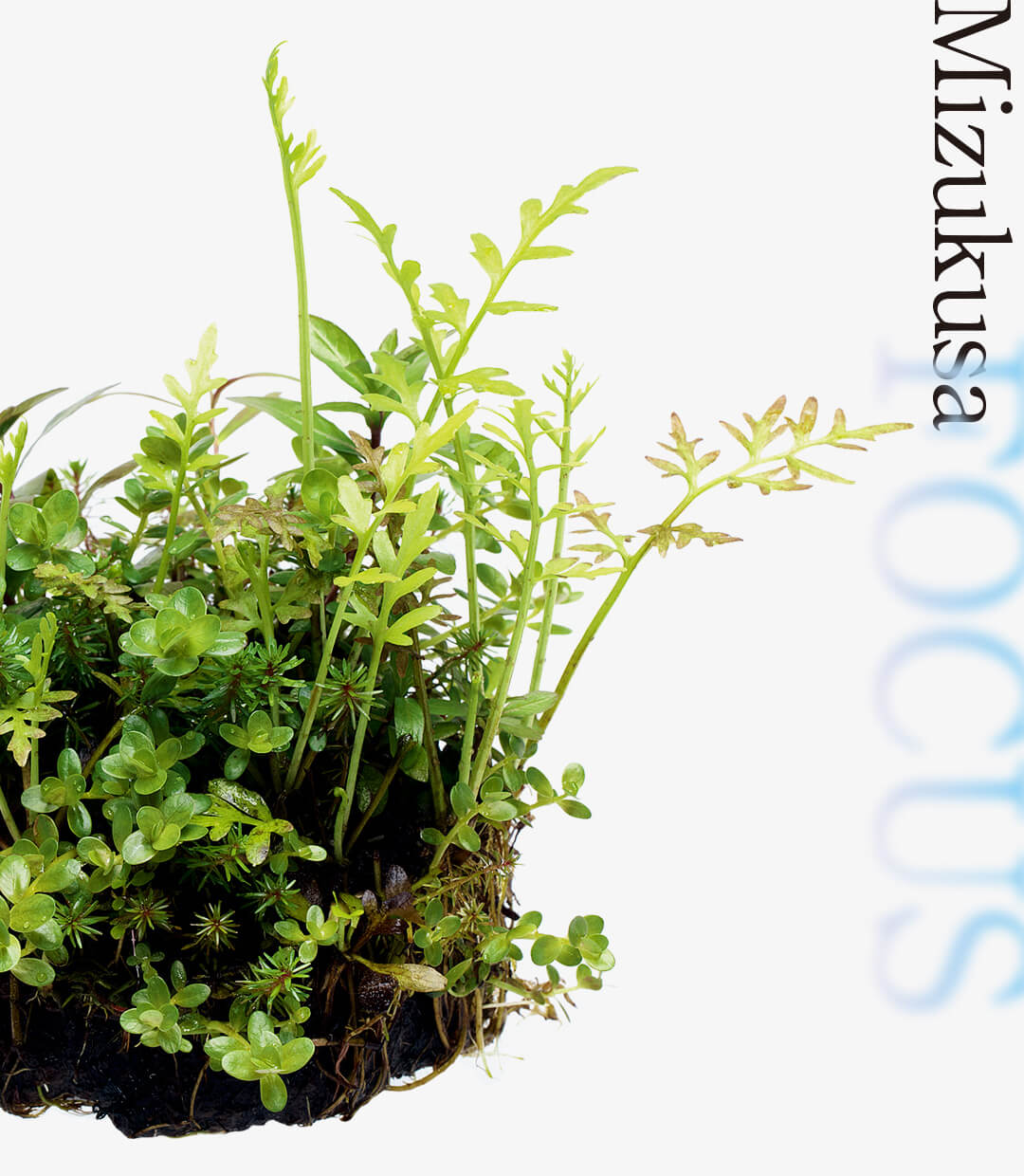NATURE IN THE GLASS ‘Summer Breeze’
Feel cool as feeling a pleasant breeze from the Iwagumi layout
From spring to summer when temperature rises, a river that flows at the skirt of a mountain has more water from the melted snow, and it often shows aggressive side when stones collide with each other and crumble away. And as soon as the river calms down, aquatic plants immediately start proliferating and eventually grow until even covering stones. I start creating the layout as imagining such a scene. First of all, I arranged an expressive large Sansui Stone and created an area where the water flow is strong and an area with gentle water flow by carefully placing stones and aquatic plants. I created a pleasant summer feeling with fluttering Nuphar japonicum.
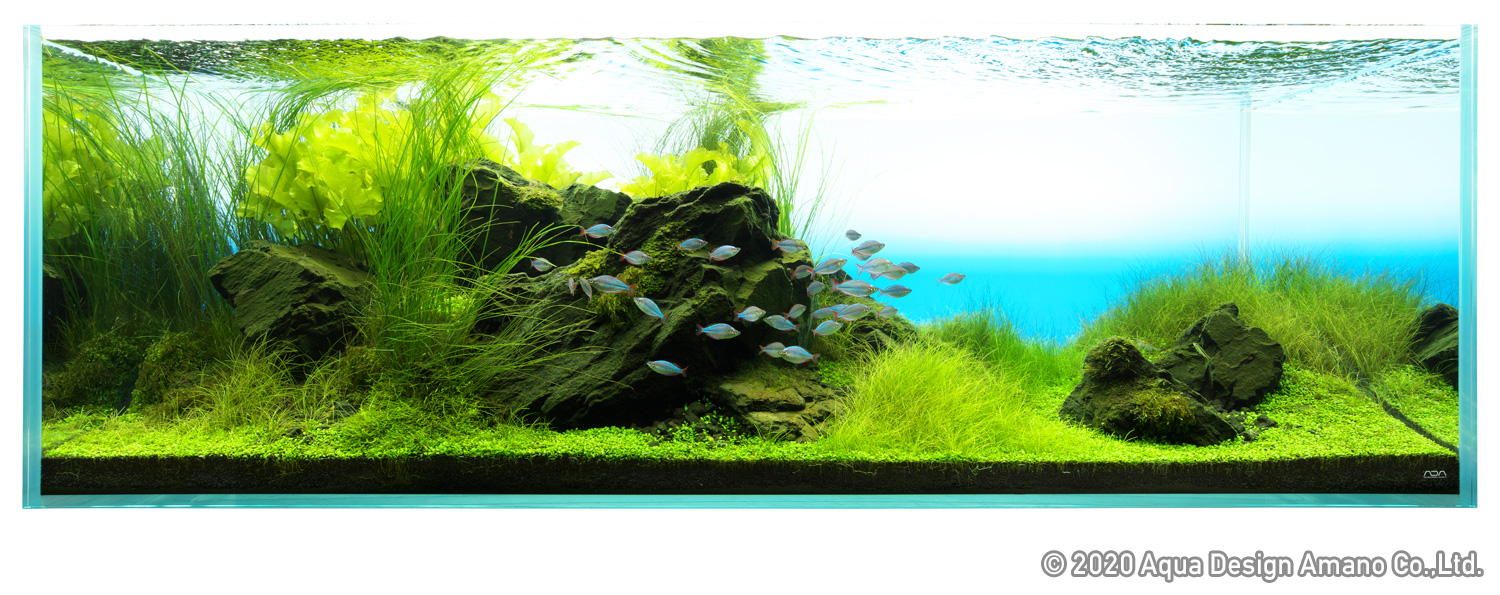
DATA
Shooting date: October 11th, 2019(ADA)
Creator: Yusuke Homma
Aquarium: Cube Garden W180×D60×H60(cm)
Lighting: Solar RGB x 3, turned on for 8.5 hours per day
Filter: Super Jet Filter ES-2400(Bio Rio L)
Material: Sansui Stone
Substrate: Aqua Soil – Amazonia Ver.2, Power Sand Advance L, Bacter 100, Clear Super, Tourmaline BC
CO2: Pollen Glass Beetle 50Ø, 10 bubbles per second via CO2 Beetle Counter (using Tower)
Aeration: 15.5 hours after the light is turned off using Lily Pipe P-6
Additives: Brighty K, Green Brighty Mineral, Green Brighty Nitrogen
Water change: 1/2 once a week
Water quality: Temperature: 25ºC; pH: 6.6; TH: 20 mg/l
Plants
Nuphar japonicum
Eriocaulon sp.
BIO Mizukusa no Mori Glossostigma elatinoides
BIO Mizukusa no Mori Eleocharis acicularis
BIO Mizukusa no Mori Callicostella prabaktiana
Wabi-Kusa Mat Taxiphyllum barbieri
Wabi-Kusa Mat Riccardia chamedryfolia
Fish
Melanotaenia praecox
Crossocheilus oblongus
Otocinclus sp.
Caridina multidentata
Shooting date: October 11th, 2019(ADA)
Creator: Yusuke Homma
Aquarium: Cube Garden W180×D60×H60(cm)
Lighting: Solar RGB x 3, turned on for 8.5 hours per day
Filter: Super Jet Filter ES-2400(Bio Rio L)
Material: Sansui Stone
Substrate: Aqua Soil – Amazonia Ver.2, Power Sand Advance L, Bacter 100, Clear Super, Tourmaline BC
CO2: Pollen Glass Beetle 50Ø, 10 bubbles per second via CO2 Beetle Counter (using Tower)
Aeration: 15.5 hours after the light is turned off using Lily Pipe P-6
Additives: Brighty K, Green Brighty Mineral, Green Brighty Nitrogen
Water change: 1/2 once a week
Water quality: Temperature: 25ºC; pH: 6.6; TH: 20 mg/l
Plants
Nuphar japonicum
Eriocaulon sp.
BIO Mizukusa no Mori Glossostigma elatinoides
BIO Mizukusa no Mori Eleocharis acicularis
BIO Mizukusa no Mori Callicostella prabaktiana
Wabi-Kusa Mat Taxiphyllum barbieri
Wabi-Kusa Mat Riccardia chamedryfolia
Fish
Melanotaenia praecox
Crossocheilus oblongus
Otocinclus sp.
Caridina multidentata
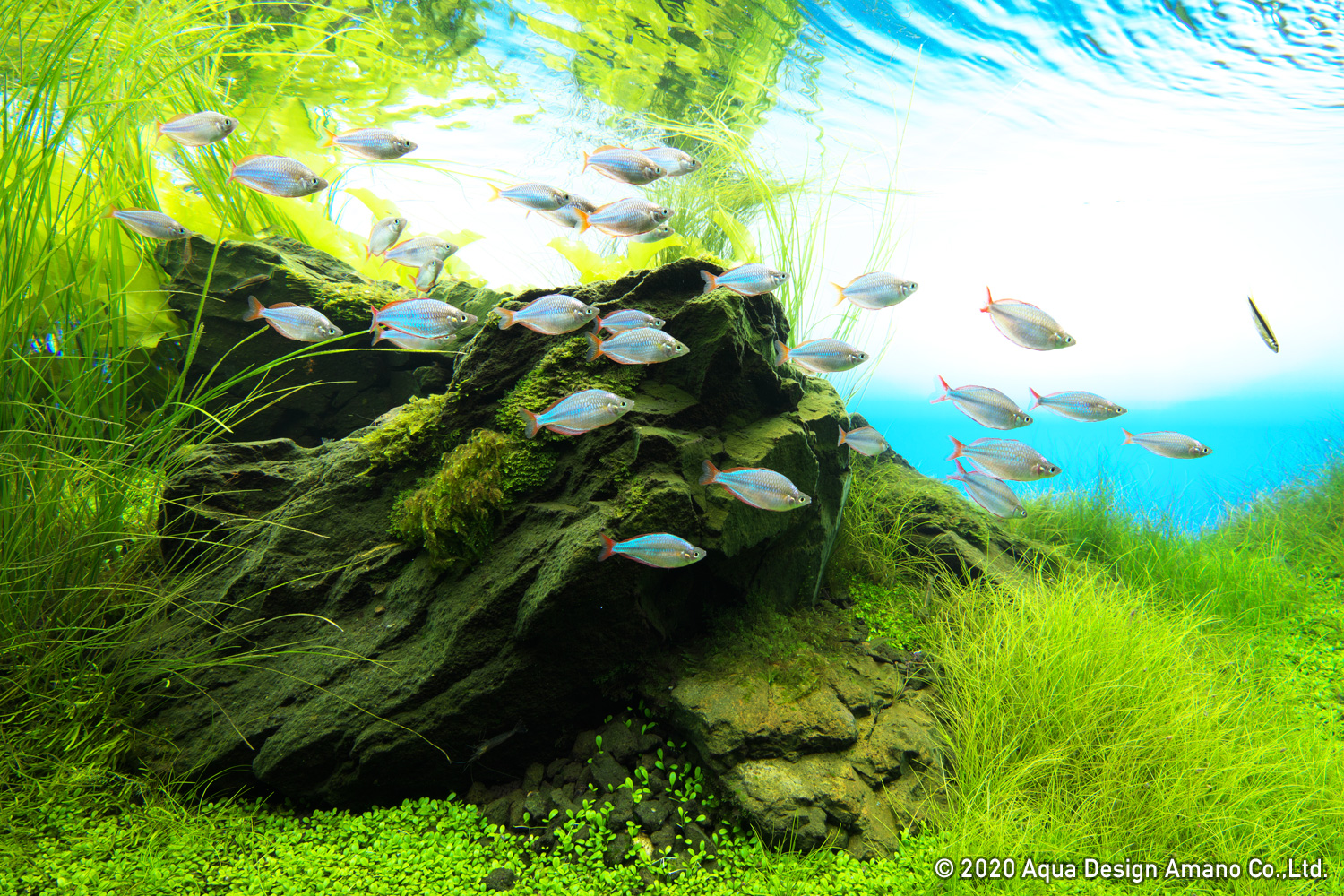
Aquatic plants and fish with a cool feeling
In the season when temperature rises, we would love to feel cool at least from aquascapes. To create a cool feeling in an aquascape, a choice of aquatic plants and fish becomes important. For aquatic plants, ones in pleasant green color that sway and wave with the water flow are suitable. And for fish, ones in blue color that swim in a group are suitable.
In the season when temperature rises, we would love to feel cool at least from aquascapes. To create a cool feeling in an aquascape, a choice of aquatic plants and fish becomes important. For aquatic plants, ones in pleasant green color that sway and wave with the water flow are suitable. And for fish, ones in blue color that swim in a group are suitable.
Learn tips for “COOL” layouts from natural scenery
What makes Nature Aquarium definitely different from other aquatic plant layouts is an attitude that the founder, Takashi Amano practiced, which is “Learn from Nature”. In this season as we welcome the full-blown summer after overcoming the rainy season, I tend to go to streams or waterfalls, probably because I am searching for cool scenery. It can be said that streams and waterfalls are reservoirs of inspiring scenery. I don’t just look for a cool feeling. But I also pay close attention to stone shapes and expressions of pebbles that are formed over time in nature and how plants grow etc.
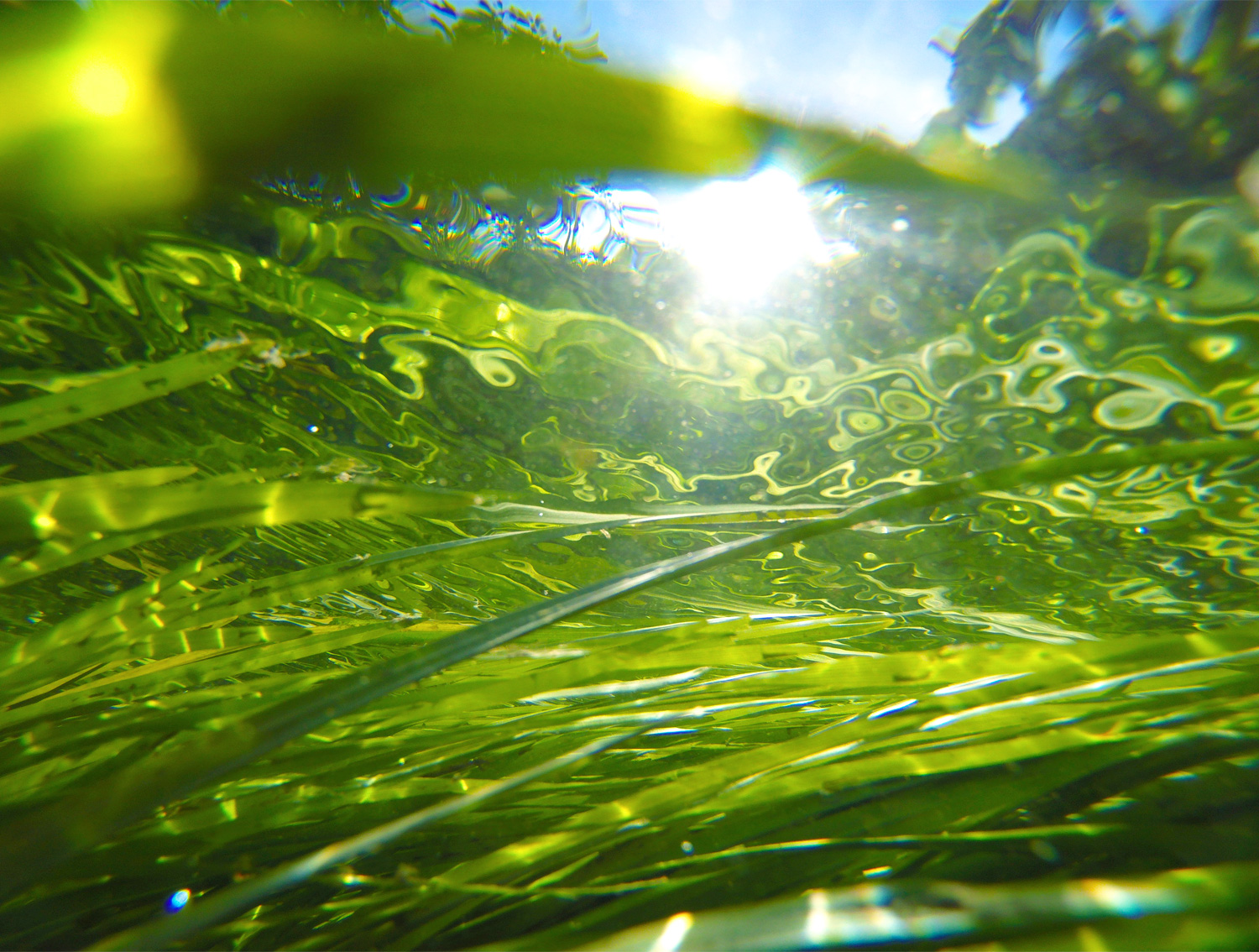
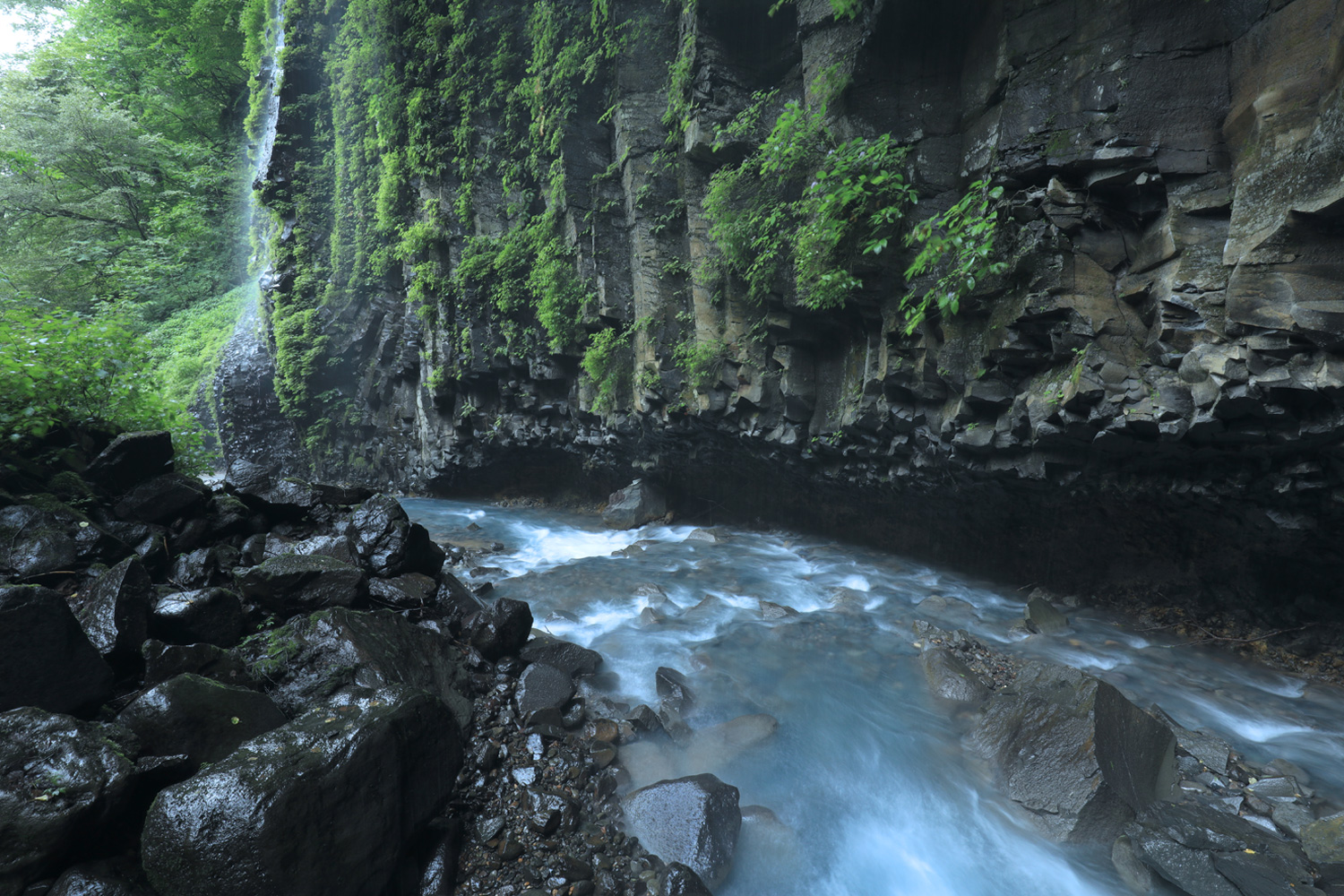
Learn the expression of cool from dripping water, how plants grow and crumbled stones
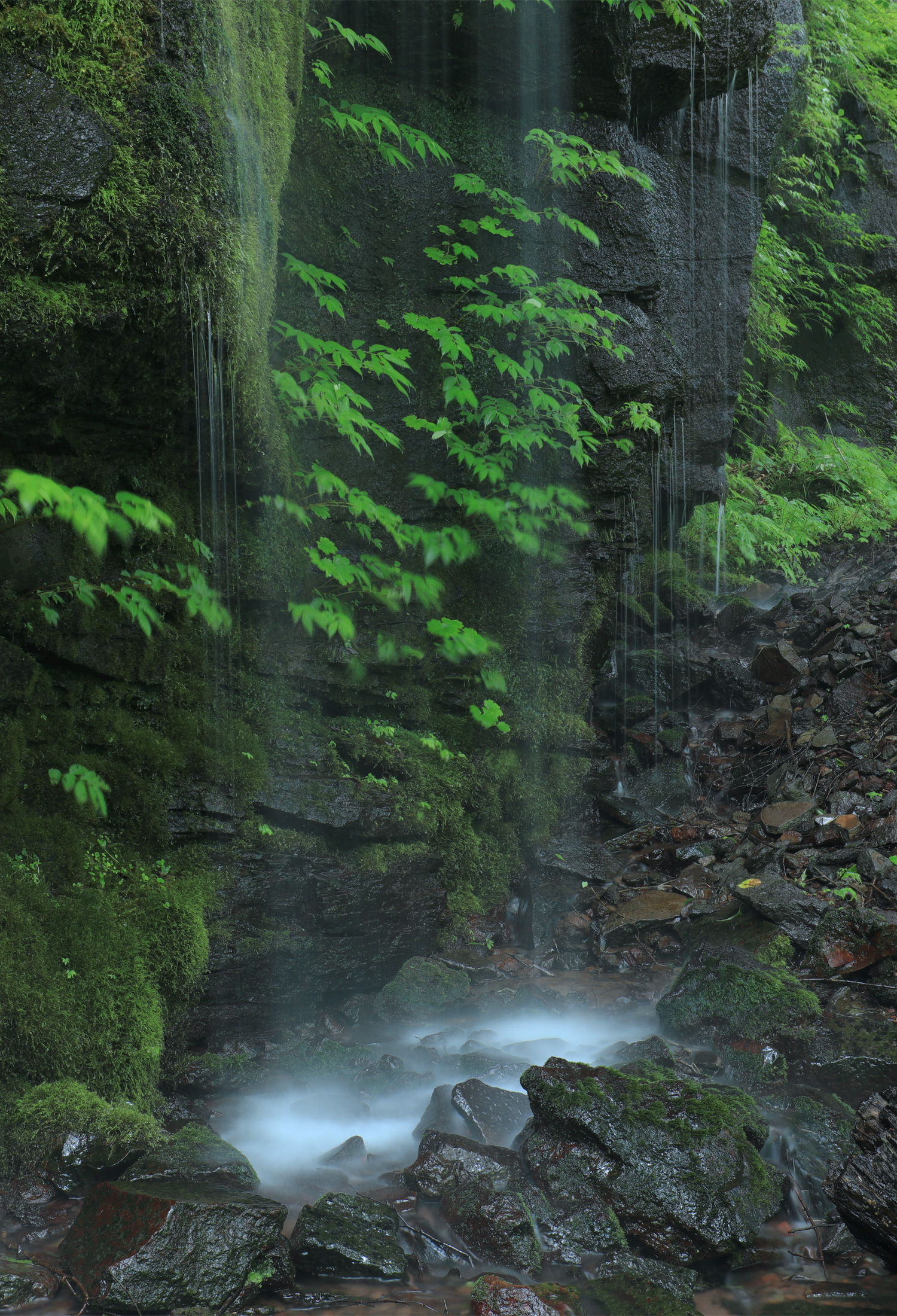
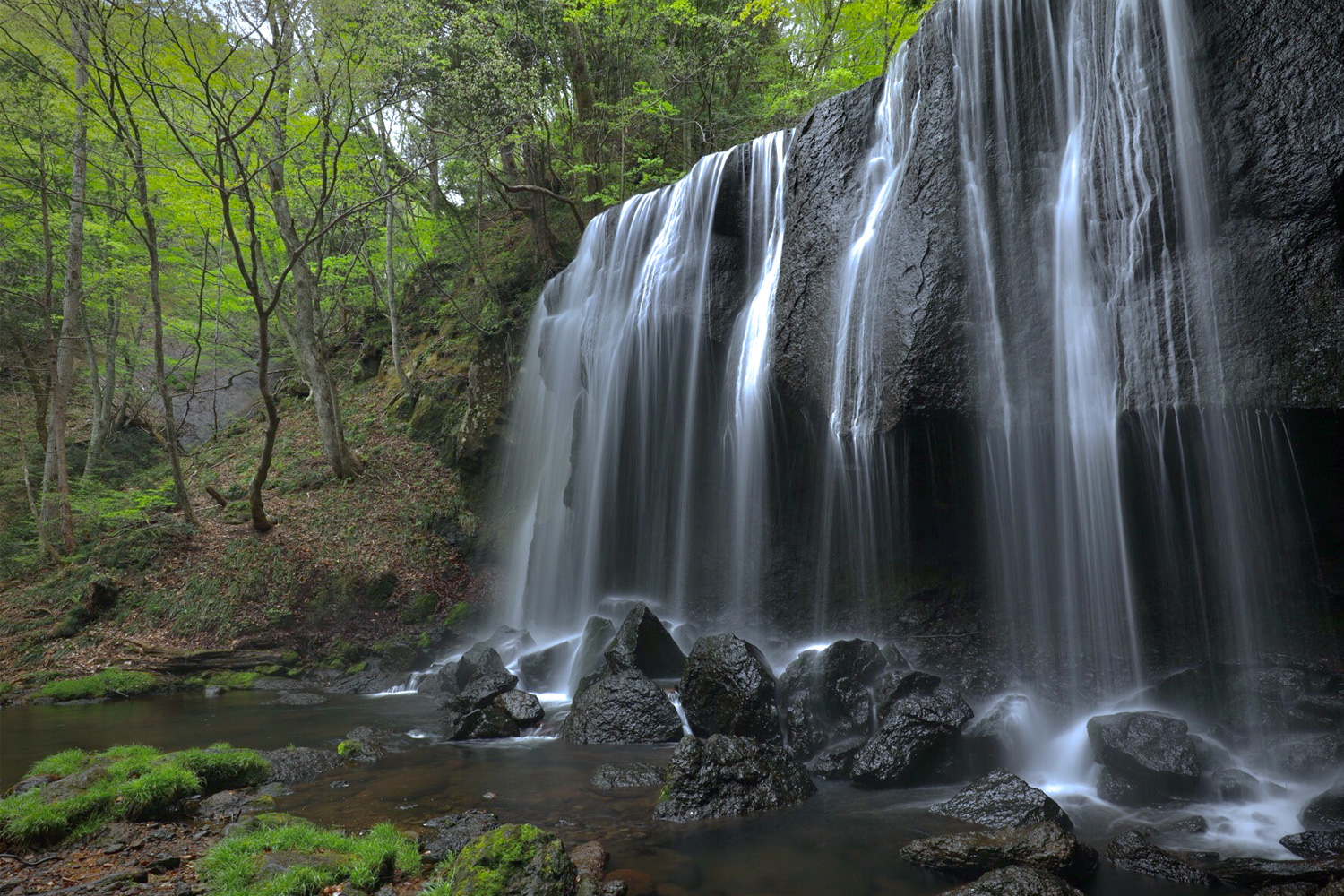
Inspirations from scenery
Plants don’t grow on stones under the waterfall where being hit by strong water stream. But they grow in places far from it. In the scenery, there are many hints that can be used for aquascapes.
Photo / Inawashiro Town, Fukushima in May, 2018
Plants don’t grow on stones under the waterfall where being hit by strong water stream. But they grow in places far from it. In the scenery, there are many hints that can be used for aquascapes.
Photo / Inawashiro Town, Fukushima in May, 2018
Imagining of a pleasant aquascape with a cool feeling
In order to express a cool feeling in the aquascape, I used Sansui Stones and created an Iwagumi as if crumbled stones were scattered around. On the left, I placed a cluster of large stones while imaging them to be strong enough against the increased water having strong flow. I spread some crumbled stones around the large stones. Increased water in a river creates a strong water flow, stones get crushed as being washed away by water. Tiny stones around the large stones appeared to be the crumbled stones in the river. I placed less stones on the right to keep the space wide and created an area where the water flows vigorously by using only Glossostigma elatinoides for the foreground and Eleocharis acicularis. And for aquatic plants in the background, I chose Nuphar japonicum and Eriocaulon sp. which create a pleasant feeling and cool feeling. I planted Nuphar japonicum behind the stones where the water flow tends to be slow. Eriocaulon sp. is a tape shaped aquatic plant with skinny delicate leaves. But it does not develop runners. Therefore the long term maintenance can be done easily.
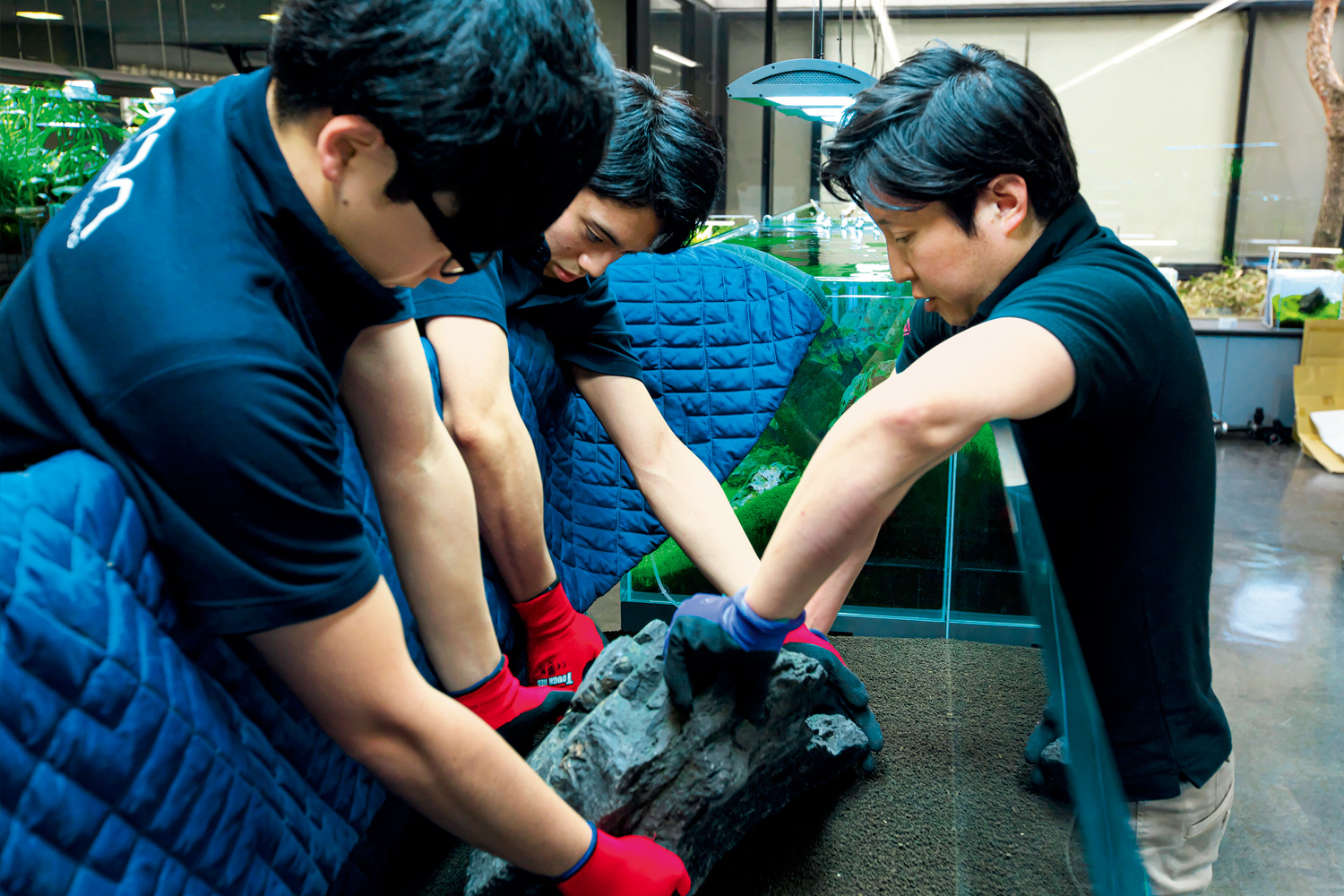
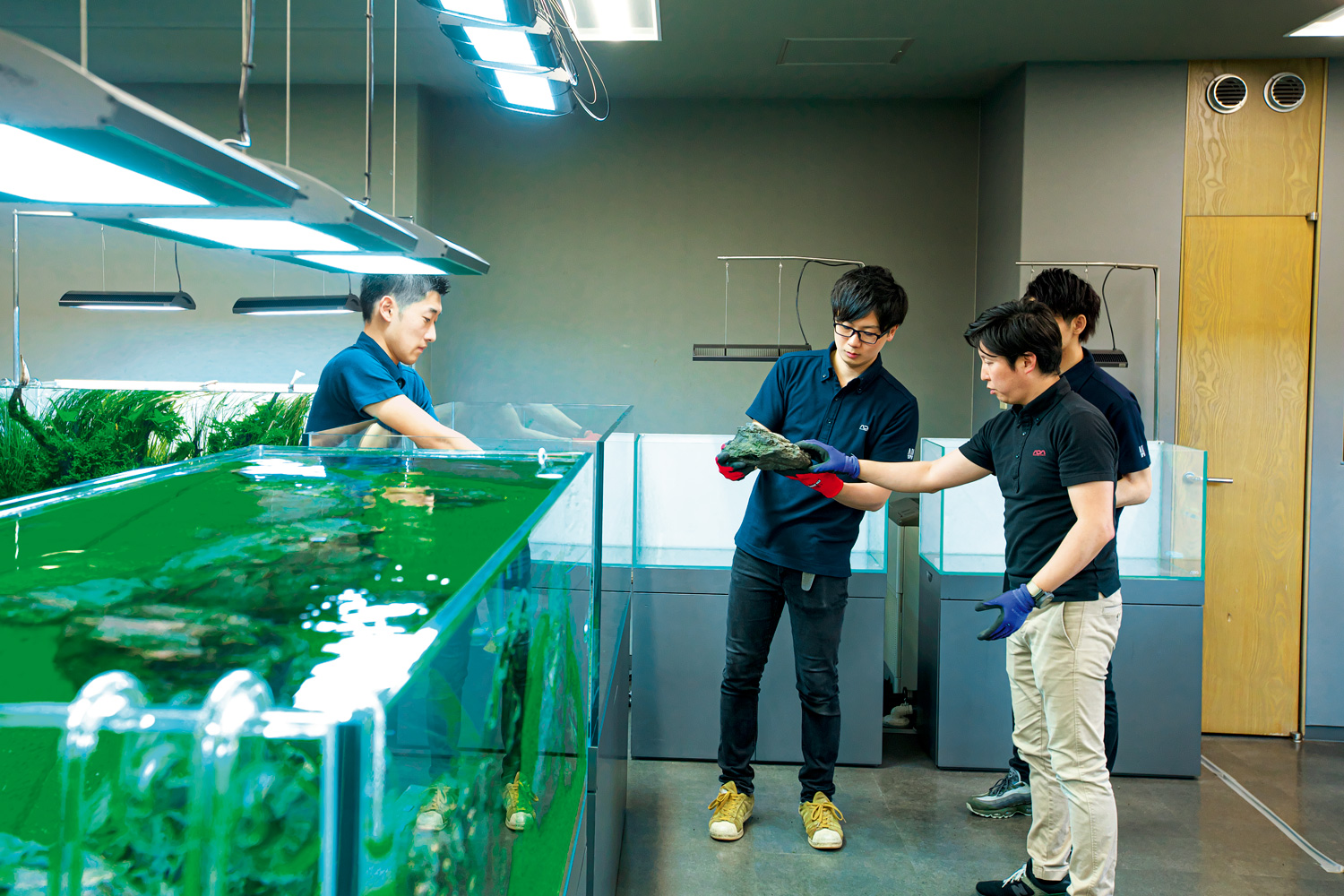
Iwagumi production in a large aquarium tank
When creating layouts in large aquarium tanks such as 180cm wide tanks, the size of stones also becomes large. Consequently, it requires several people for creating an Iwagumi. While making sure which task comes next, I decided where to place each stone.
When creating layouts in large aquarium tanks such as 180cm wide tanks, the size of stones also becomes large. Consequently, it requires several people for creating an Iwagumi. While making sure which task comes next, I decided where to place each stone.
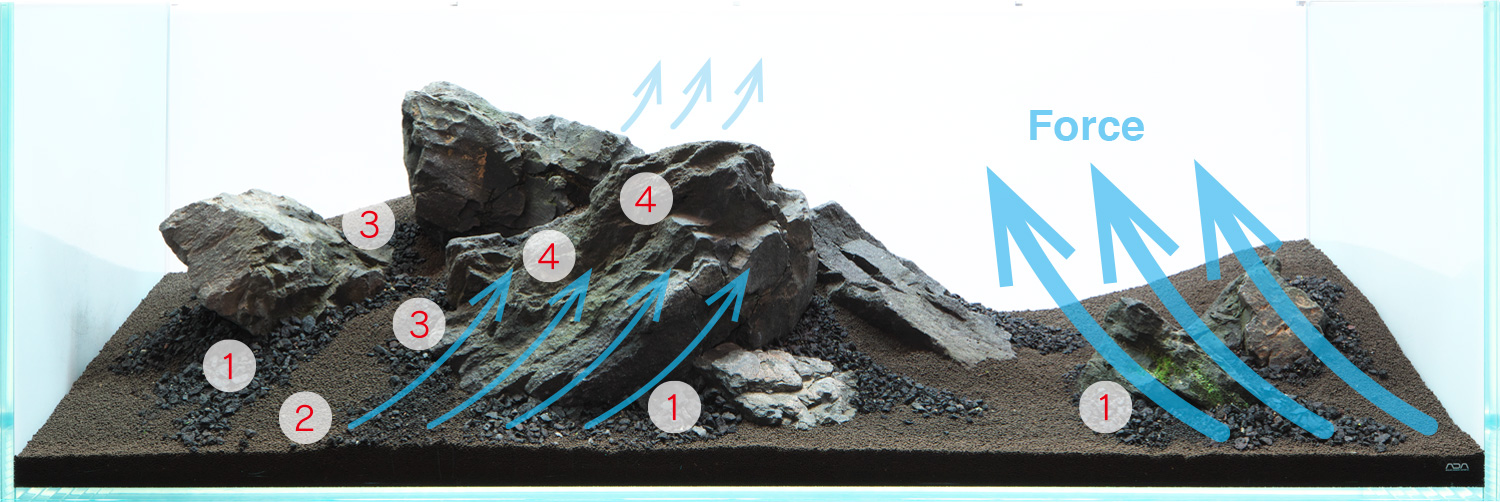
Intention of the composition
Because I wanted to give a large space on the right as an overall balance, I placed a cluster of stones around Oya-Ishi (main stone) slightly off to the left from the center. With this composition, I was able to create a sense of stability that can take the strong water flow on the left and the strong water flow on the right.
Because I wanted to give a large space on the right as an overall balance, I placed a cluster of stones around Oya-Ishi (main stone) slightly off to the left from the center. With this composition, I was able to create a sense of stability that can take the strong water flow on the left and the strong water flow on the right.
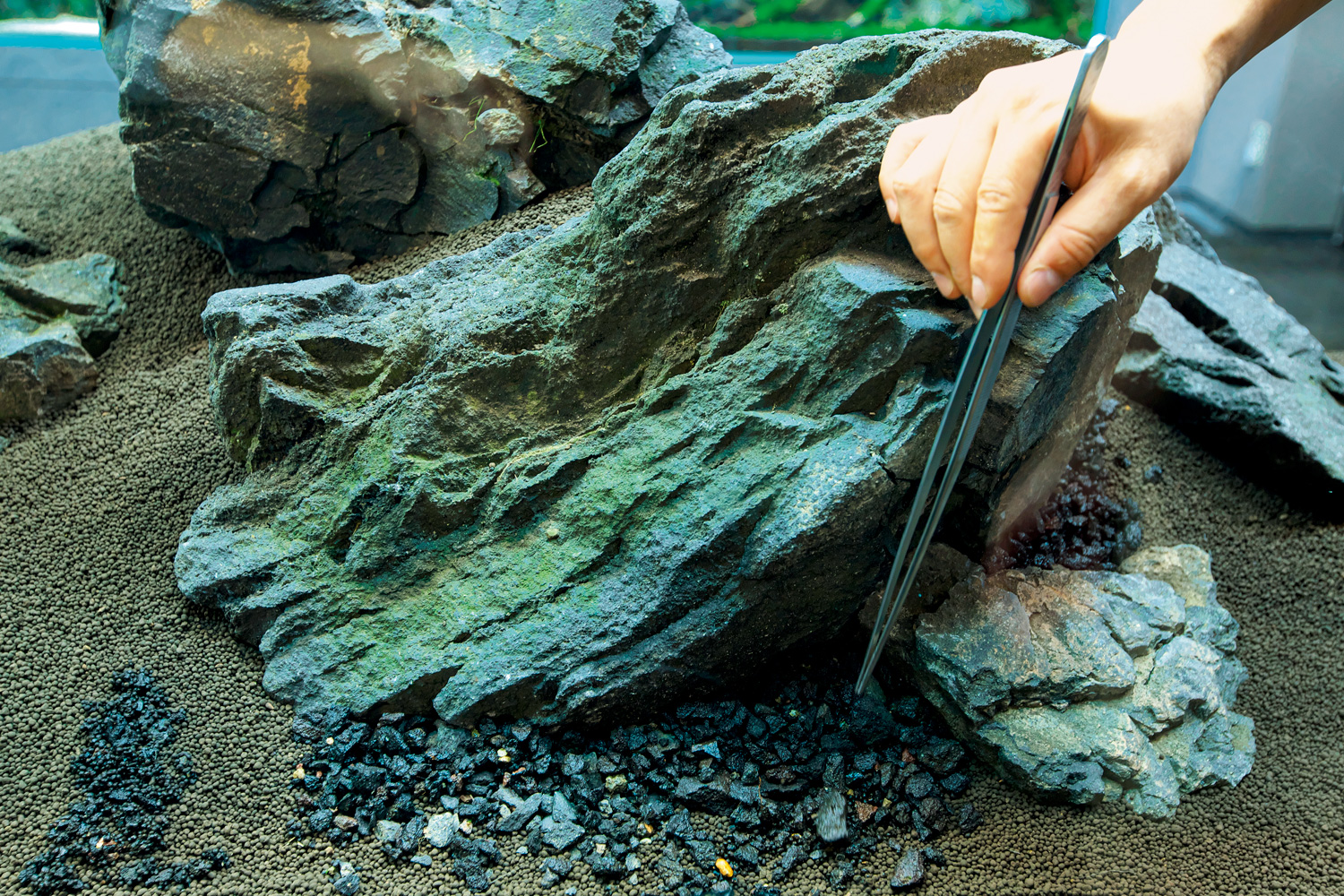
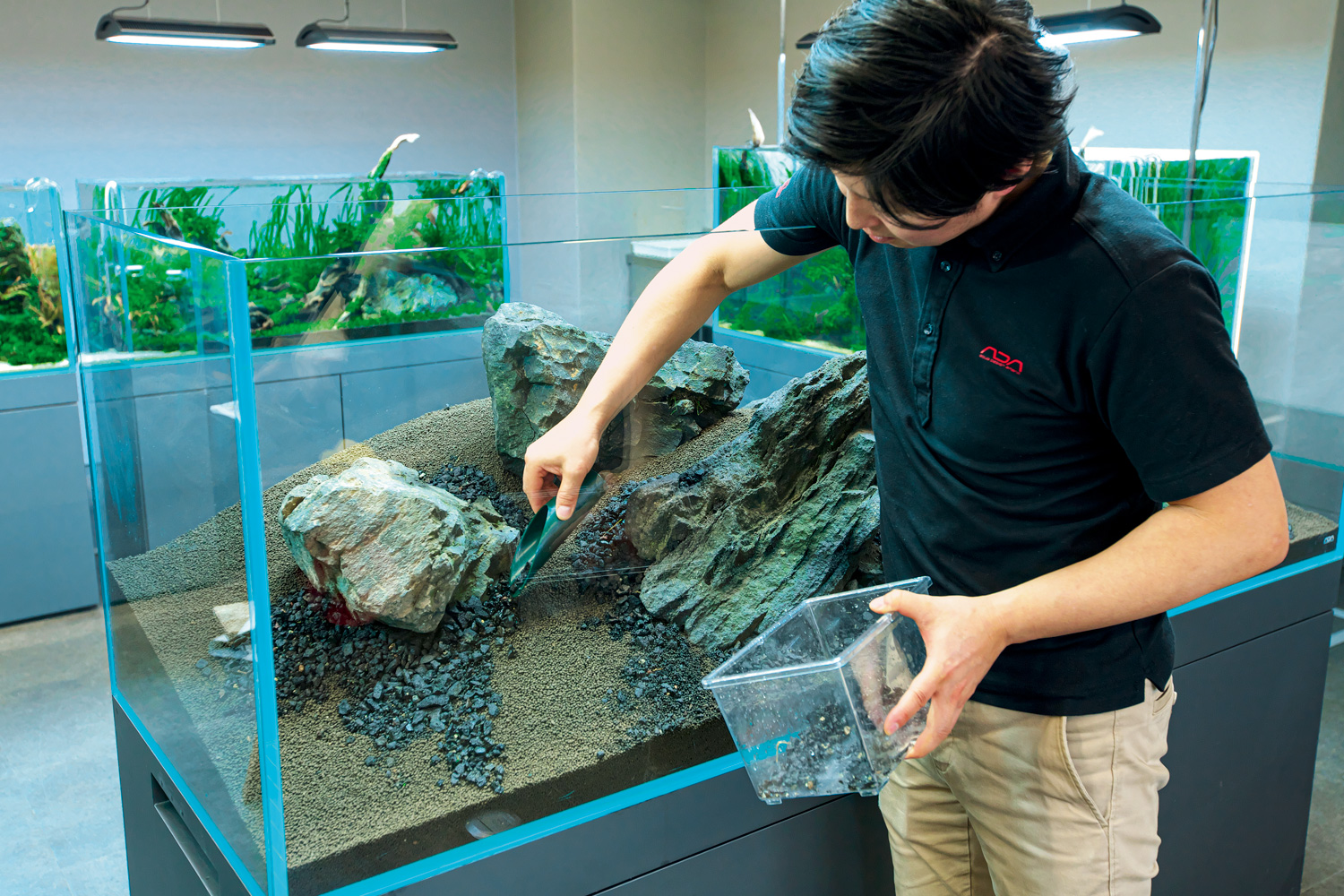
①Expression of crushed stones
To express the way stones collide with each other by the strong water flow and get crushed, I chose Sansui Stones because of their cracked shape. After placing small and large Sansui Stones and mounting soil, I spread some tiny pieces of stones around those stones.
To express the way stones collide with each other by the strong water flow and get crushed, I chose Sansui Stones because of their cracked shape. After placing small and large Sansui Stones and mounting soil, I spread some tiny pieces of stones around those stones.
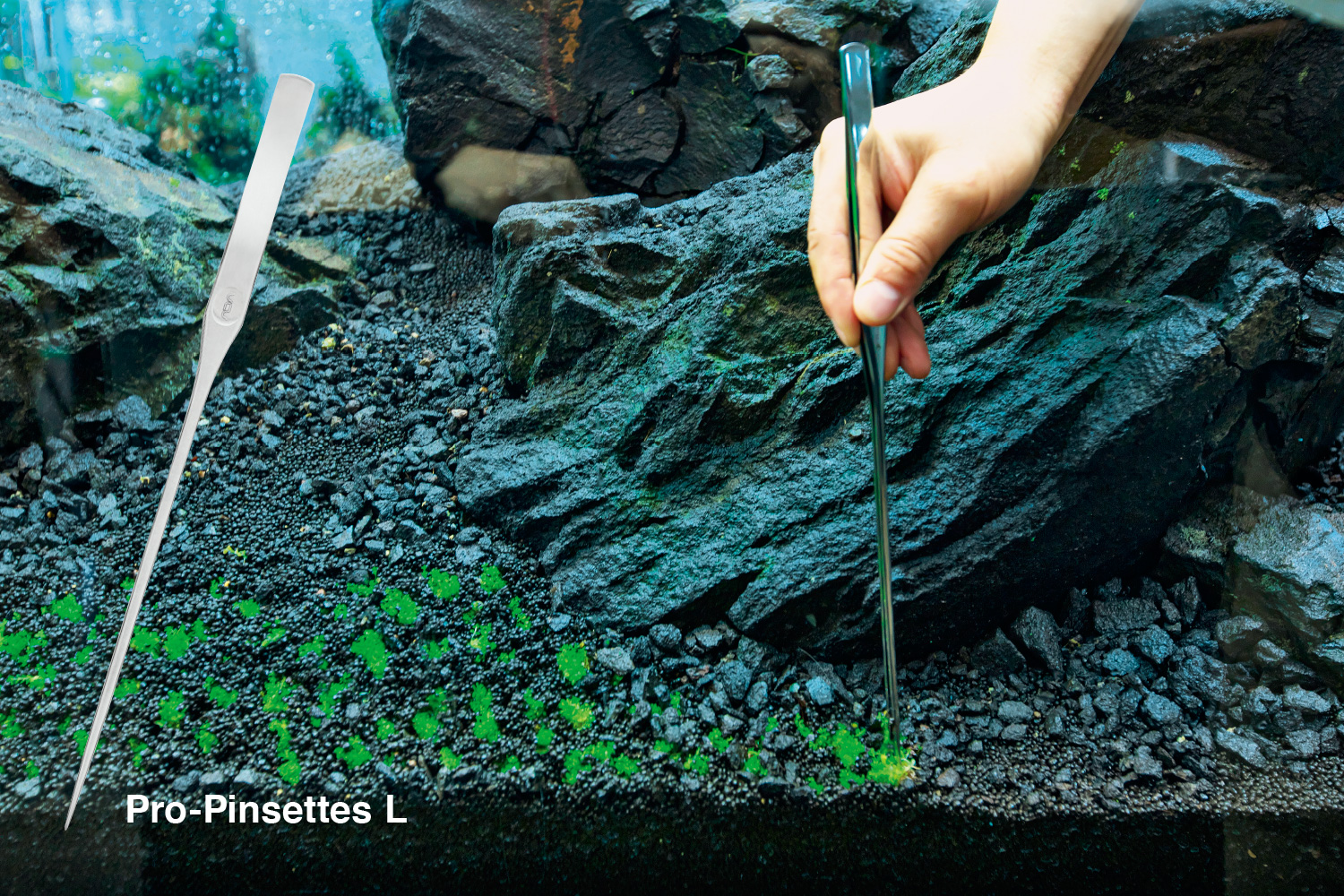
②Situation when Pro Pinsettes are suitable
For planting carpet plants, by using Pro Pinsettes with pointy tips, it becomes easier to plant precisely between even pebbles. Among the Pro Pinsettes series, especially L (Length 270mm) is often used because they are easy to handle.
For planting carpet plants, by using Pro Pinsettes with pointy tips, it becomes easier to plant precisely between even pebbles. Among the Pro Pinsettes series, especially L (Length 270mm) is often used because they are easy to handle.
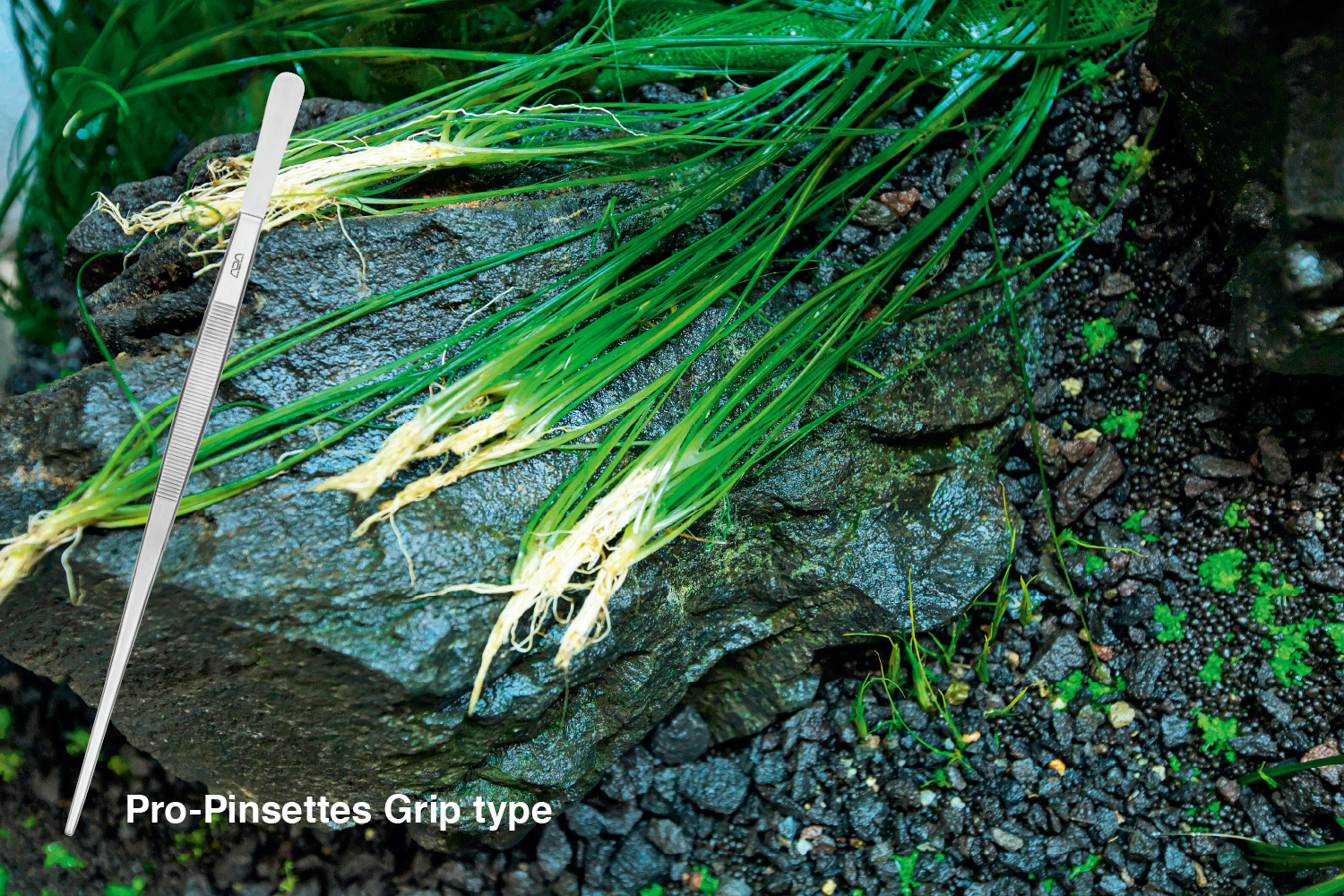
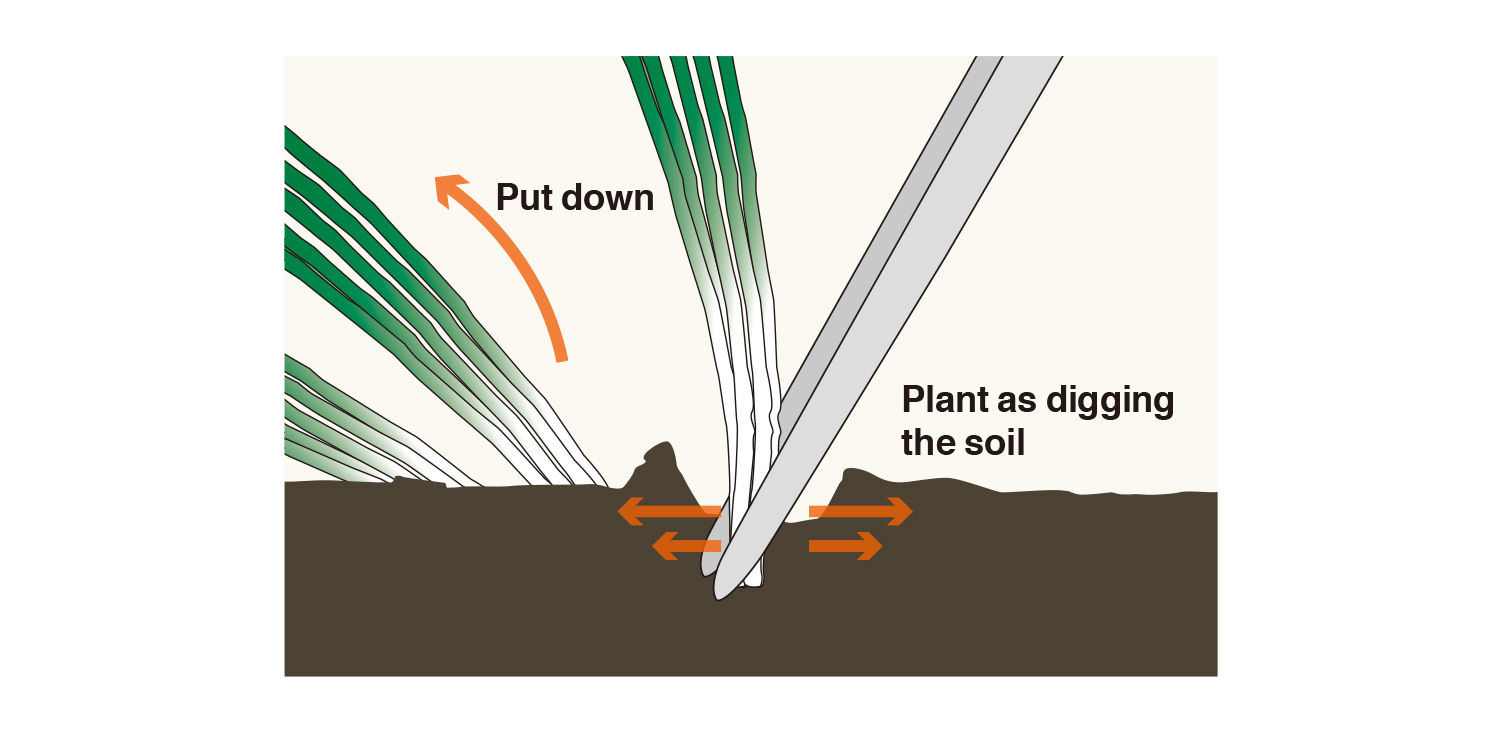
③Situation when Grip Pinsettes are suitable
When planting Eriocaulon sp. that has thick bulbs, they can be planted easily and firmly if using Pro-Pinsettes Grip Type. Because the Grip Type has thic tips, it enables us to plant as digging the substrate with the tips.
When planting Eriocaulon sp. that has thick bulbs, they can be planted easily and firmly if using Pro-Pinsettes Grip Type. Because the Grip Type has thic tips, it enables us to plant as digging the substrate with the tips.
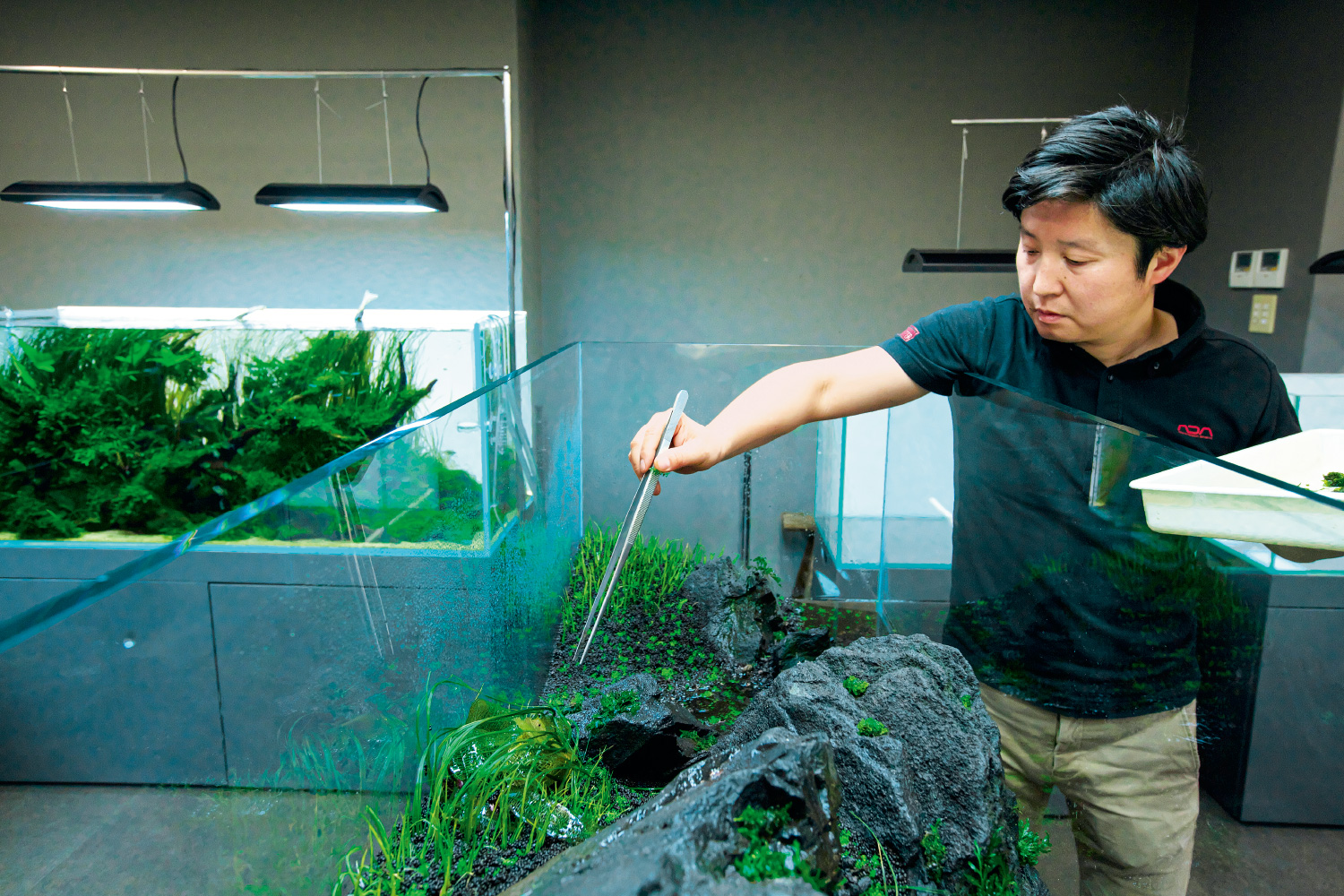
④Planting
To create delicate expressions in a layout, Pro Pinsettes are essential because they are easy to use for planting aquatic plants. Here, I am precisely adjusting the placement of aquatic plants.
To create delicate expressions in a layout, Pro Pinsettes are essential because they are easy to use for planting aquatic plants. Here, I am precisely adjusting the placement of aquatic plants.
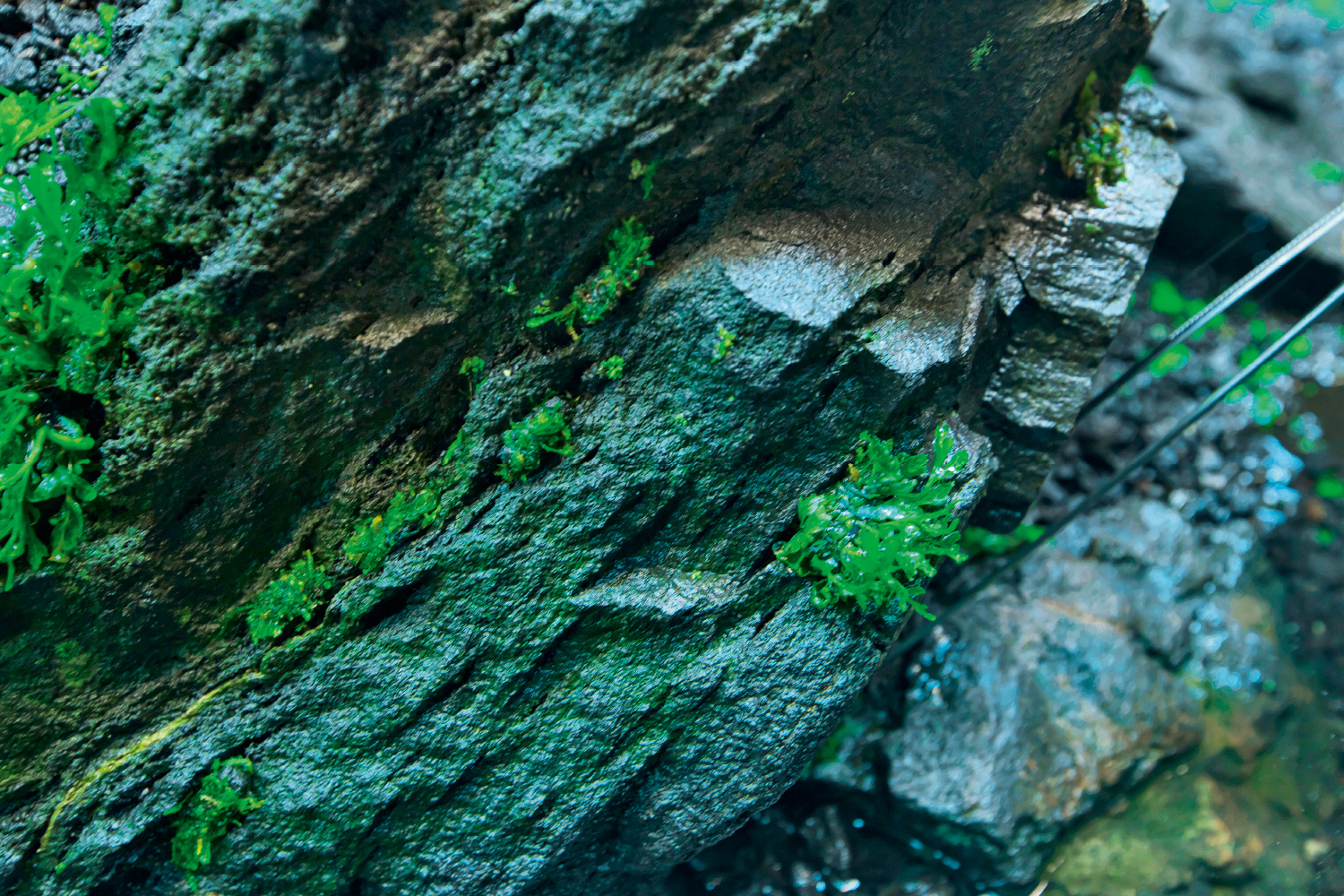
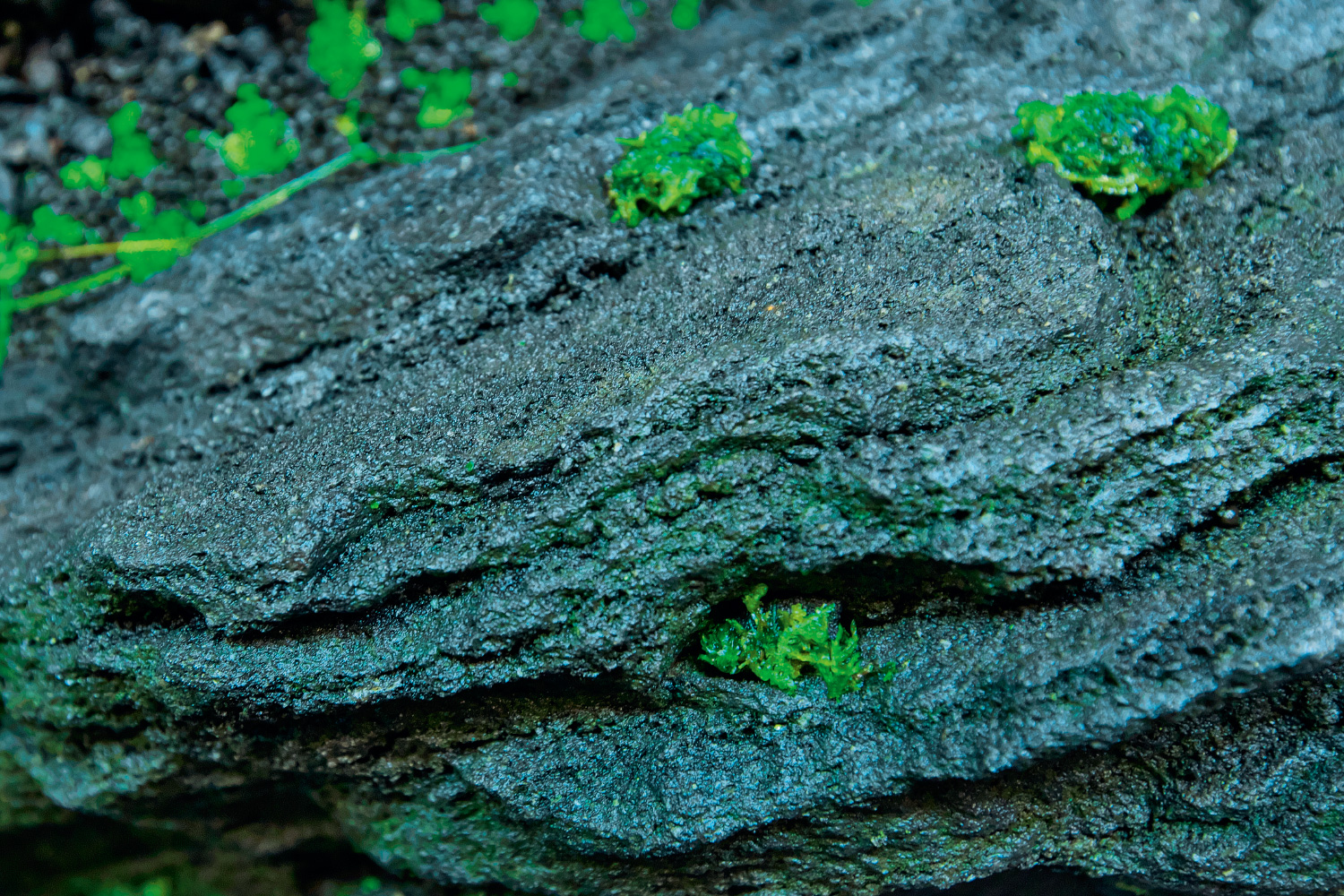
In order to express the way moss has been drifted and ended up growing between stones, I tucked some Callicostella prabaktiana and Riccardia chamedryfolia together in cracks of the stones. Sansui Stones have many cracks, and their surfaces are rough. So it is easy for moss to attach.
